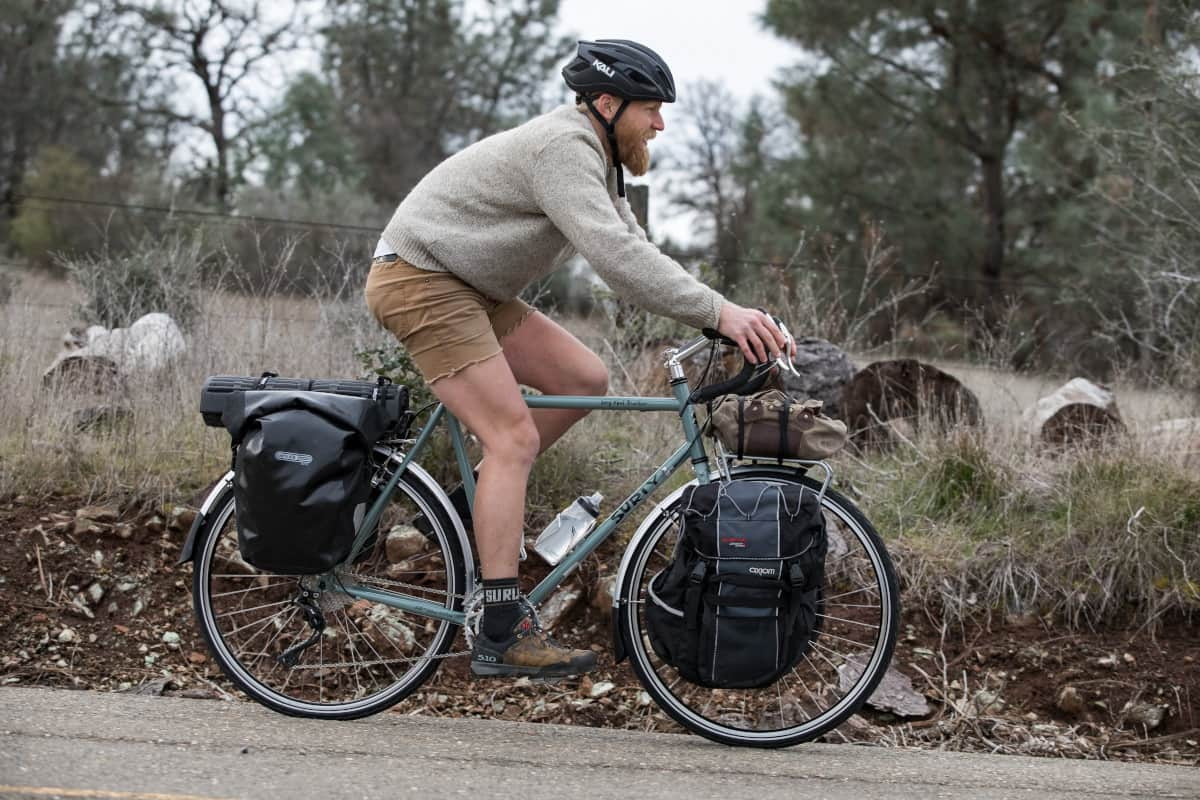My idea of bike touring is riding a bike through an area of interest to see it, while being dependent on the bike for transportation throughout multiple days. I've not done what I consider "bike touring," but have a mind to. I'm considerate of the fact I may not understand everything about it. If I were to tour, my focus would be on seeing the area I'm touring and not on covering a certain amount of distance so I could say I did it.
As I've begun to explore the "touring" bikes that are available, I've noticed that they often trade-off lightweight components for comfort and load-bearing ability. They're likely to have heavy high-profile tires at lower pressures with greater rolling resistance and heavier steel frames for "comfort," and to have heavy wheels, long chainstays and wheelbases for increased luggage capacity. With the added weight of the bike and cargo, they're likely to have more and a wider range of gears.
So with this focus on comfort and load-bearing ability at the cost of low weight and high speed, why do all the touring bikes put the rider in an aerodynamic crouch?

This is a Surly Long Haul Trucker -- a bike lauded for it's upright riding position. Why is the guy hunched over? He's not even in the drops and he's hunched over at 40 degrees (with 90 being vertical). I know Americans tend to prefer drop bars and straight bars might be more popular in Europe, but a straight bar isn't going to put him that much more upright than where he is on the hoods. What is the meaning of this hunched over position for touring? When I ride a bike like this, I just get the front edge of the helmet in my eyes and I can see mostly the road in front of me. My back is arched and my neck craned back and my chin is out over in front of my knees. How is this comfortable and what is the purpose of this?
I considered whether a smaller touring bike would bring the handlebars closer to the rider for a more upright position. Here is a comparison:

The larger bike is a medium-sized 56cm/700c Surly Trucker. The smaller bike is a size 46cm/650b.
I've matched the bottom brackets and what we can see clearly is a shorter seat tube and lower stand-over height. The top of the head tube, however, is much lower and only a little closer to the rider. This will result in just as much or more hunch to reach the bars. It seems like the smaller rider is better off with the biggest frame that allows a proper seat height so the bars will not be so low. They'll have to reach forward but not so far down.
I've used the Surly Trucker as an example, but I've found the same thing with most touring bikes: the top tubes tend to be substantially longer, sometimes 20 or 30mm longer than the seat tubes and so the reach is in greater proportion to the stack than one would expect for an upright riding position.
Is there a reason I should not want to have an upright position for touring, a position more like a "comfort bike" or beach cruiser? Obviously it's much less aero, but I wouldn't think that touring is often done at high speeds. When I ride, I go about 4mph up 5% grades, about 12 to 15mph on the flats, and perhaps 25mph down the grades. It never occurred to me to "tuck." Why are tourists doing it?